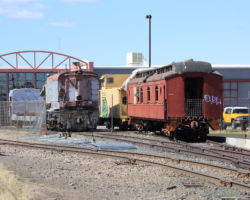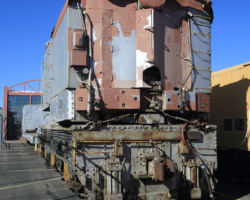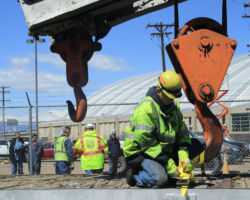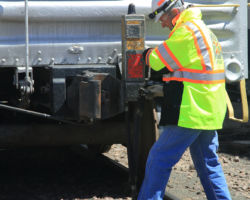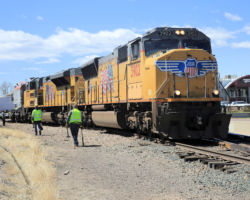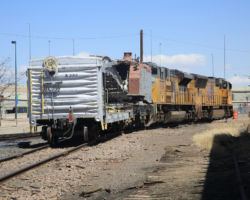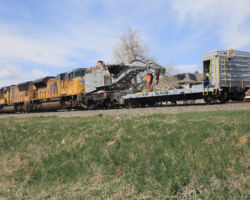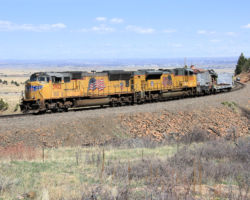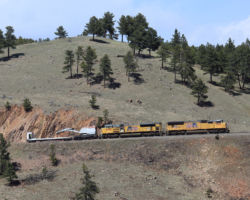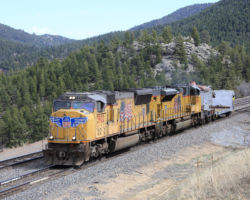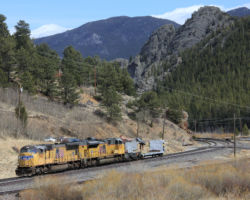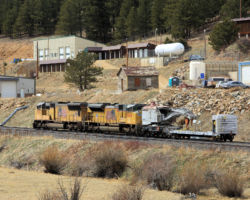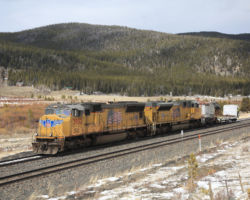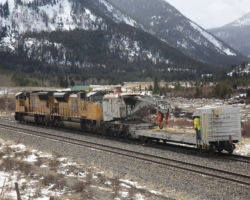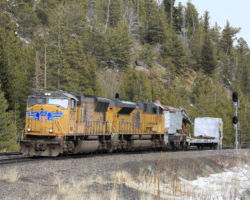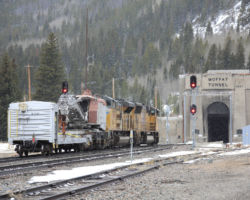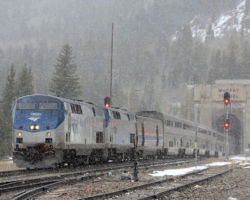D&RGW Steam Derrick 029
Denver & Rio Grande Western 029 is a 120-ton crane known as a derrick – a specialized piece of equipment built to pick up wrecked railroad equipment and clean up derailment sites. Built back in April 1913 by Industrial Brownhoist, the crane was originally Denver & Salt Lake 10300. With the D&SL eventually sold to the Denver & Rio Grande Western in 1931, the derrick went on to become D&RGW 029 when the former road was finally fully integrated in 1947. The derrick is unique in that it is still largely original, right down to the fact that it’s still steam-powered.
D&RGW X-3317 – the “flat car” – is more appropriately known as a blocking & tool car. It was built to protect the boom during movement, carry tools, and transport blocking and rigging that the derrick crew would use to retrieve wrecked cars. It’s historic in its own right. It was built at Burnham in 1951 from a 1930s-era boxcar.
After retirement, D&RGW 029 and X-3317 passed from Union Pacific to Dan Quiat, who was building a collection of historic Rio Grande MoW equipment that was stored at Burnham that he eventually intended to turn into the Museum of Railway Workers.
However, in 2015 Union Pacific decided that they would be permanently closing the Rio Grande’s former Burnham Shops and eventually selling the property. By 2017, things were becoming critical, with much of Dan’s equipment trapped. UP wanted to clean out the place to ready it for sale, and the equipment for the Museum of Railway Workers had nowhere to go.
Then the legal proceedings began… I’m going to skip that part, because I honestly don’t know all the details. The short version is that UP claimed they had the right to remove the equipment, since they had essentially evicted Dan in order to clean out the property, and Dan claimed they had no right to do so, since they didn’t own any of it. Fortunately for preservation, UP decided that rather than cut up all of it, they would transfer a few pieces to museums. Specifically, D&RGW 3006 and 01447 went to the Forney Museum of Transportation in Denver, and D&RGW 029 went to the Forney on its way to the Moffat Road Museum in Granby. The transfer from Burnham to the Forney Museum took place on Feb 18, 2018, appropriately enough lead by UP 1345 (ex-DRGW 3124), and UP 1370 (ex-DRGW 3119).
The crane sat for two months, and then on Saturday, April 14, 2018, the UP Steam Crew came to facilitate the move up to Granby. These guys have a lot of experience in handling vintage equipment, and also a vested interest in historic preservation. My understanding is that it was only via their intervention that UP agreed to make the move at all.
Switching at the Forney Museum
Before things could get moving, the crew spent a significant amount of time going over the equipment, making sure everything was secure and safe for movement. Also it took a little while for the road crew and power to show up.
Once the power arrived – UP 3902 and UP 8484 – it was a simple matter of pulling the derrick and flat out and putting a wooden passenger car and DRGW caboose 01447 back in their place. With a few more checks completed, the crew hung the EOT device, did a brake test, and was ready to head west.
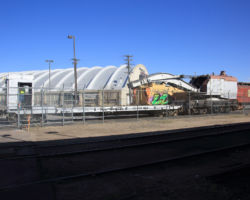
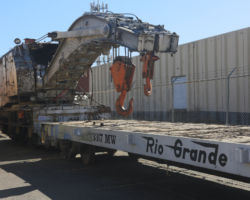
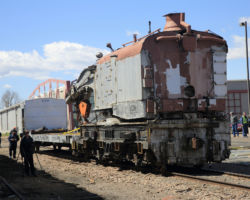
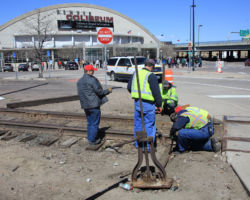
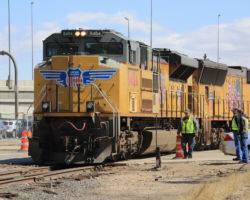
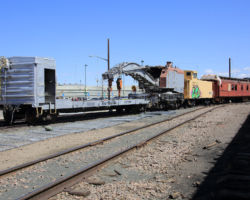
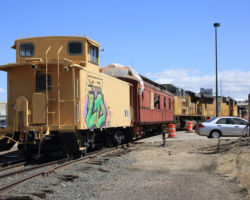
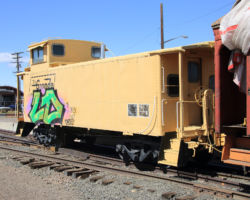
On the Move! Denver to East Portal
Once on the move, it was a long steady run all the way up to the Moffat Tunnel. The train was limited to a relatively low speed – 25 mph if I remember correctly – so for the most part, the chase was easy except through the western Denver suburbs.
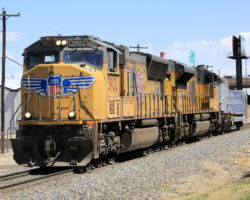
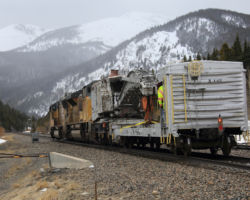
At Home in Granby
It took half a year, but in the winter of 2018-2019, an even larger crane and several track panels were used to move D&RGW 029 from the Granby house track over a few hundred yards to the museum grounds. It looks like this Rio Grande relic will be safe for the foreseeable future.
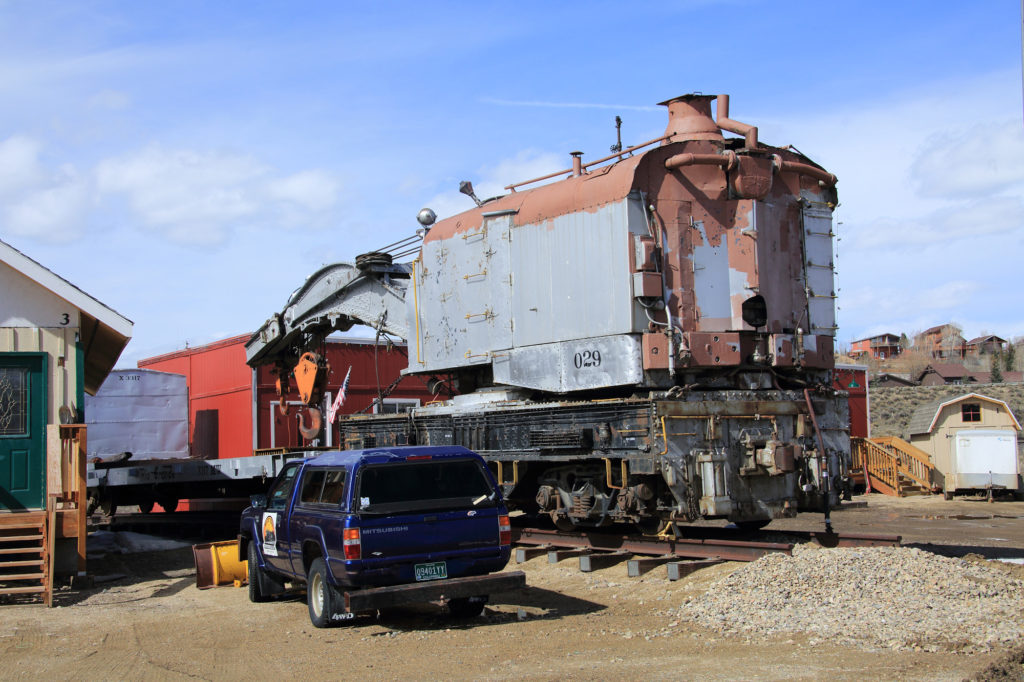
This work is copyright 2024 by Nathan D. Holmes, but all text and images are licensed and reusable under a Creative Commons Attribution-NonCommercial-ShareAlike license. Basically you’re welcome to use any of this as long as it’s not for commercial purposes, you credit me as the source, and you share any derivative works under the same license. I’d encourage others to consider similar licenses for their works.
